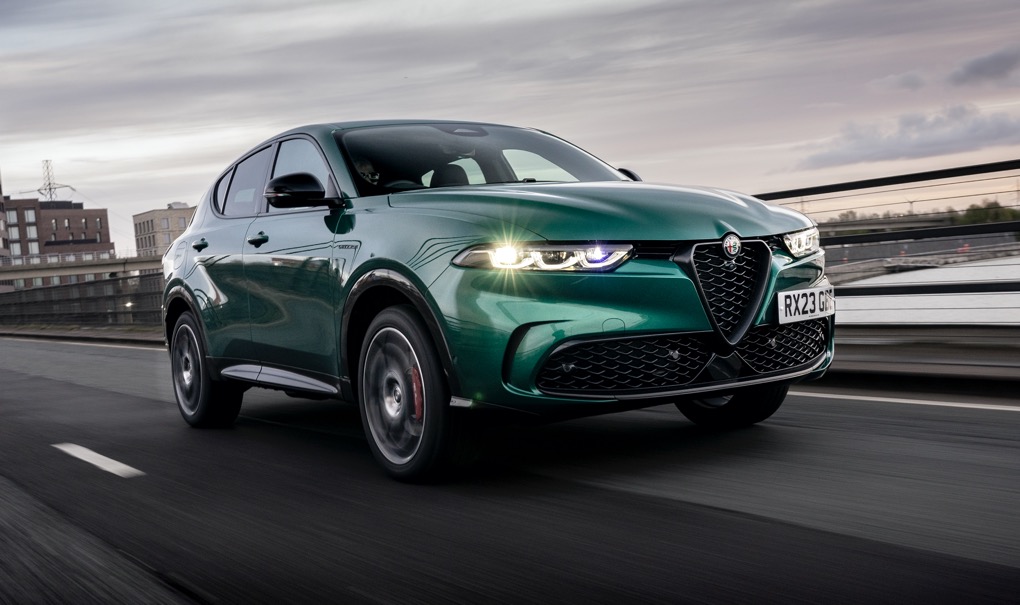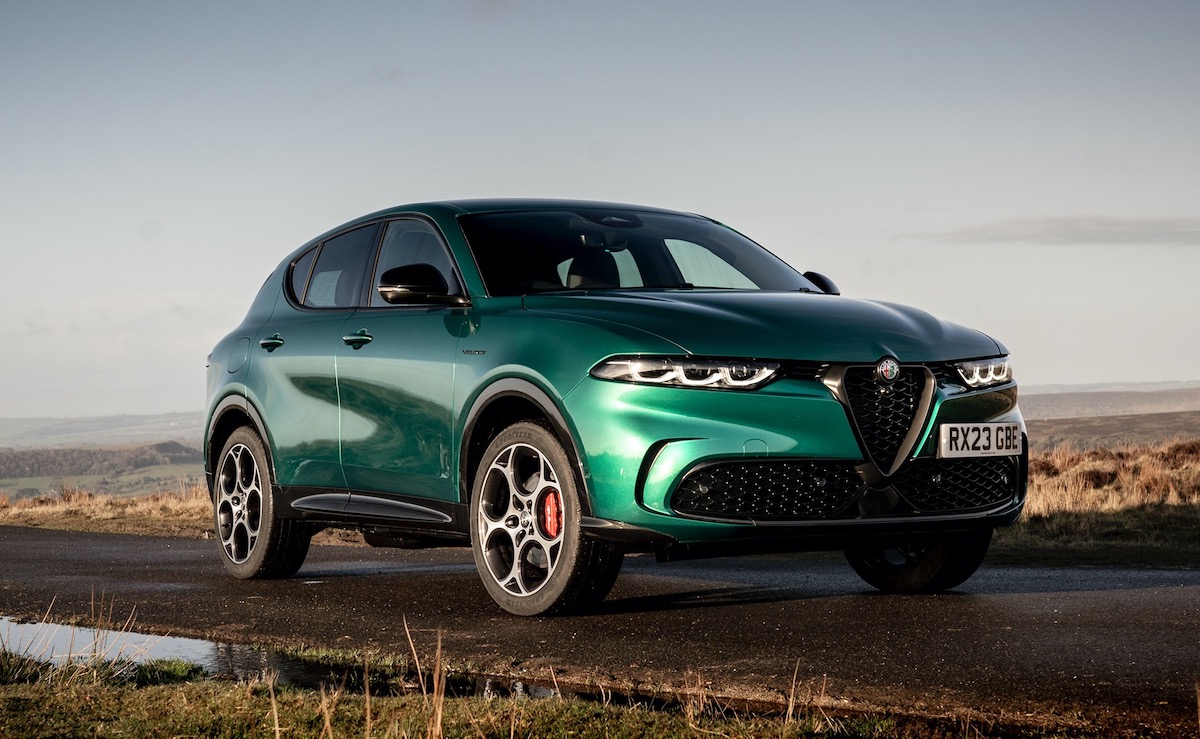The Plug-in Hybrid combines a 1.3-litre turbo engine – which drives the front wheels - with an electric motor which powers the rear axle. Combined they produce 276bhp, which is a lot more than some of the brands legendary V6 sportscars. A 0-62 mph time of 6.2 seconds will hold some sway as you chat at the office coffee machine too.
But the numbers which will be of most interest to company car drivers are the Benefit-In-Kind figures as these will affect the amount of money left in your pay packet every month. And the Alfa does really well, with an 8% rate, thanks to low emissions and a theoretical 43 mile electric-only range.
That will mean a 40% tax payer could save thousands compared to a petrol, diesel or even a less efficient PHEV rival.
Want to try the Alfa Romeo Tonale yourself? Book a test drive here
Alfa Romeo Tonale PHEV interior and practicality
When you get into the Alfa you expect it to have a ‘premium’ feel, and some parts do look impressively posh. But when you actually touch some of the plastics and the trim it feels more Fiat than Ferrari. There are some nice parts though – especially the nicely-shaped steering wheel and aluminium paddles for changing gear.
The front seats are as comfortable as they look, but it is odd being perched high in a car with sporting pretensions. It seems like you are driving a sportscar from the roof, which doesn’t feel entirely natural.
The rear seats are more bench-like but the space is reasonable. The backs are quite reclined to allow for the swooping roofline though.
Luggage space is only just on the acceptable side though, with the 385 litre capacity matching family hatchbacks like the Astra.
The infotainment screen is tiny too – just 10.25inches, which means you have to stretch to reach it. Your chances of pressing the correct icon if you are using Apple CarPlay or Android Auto while driving are virtually zero, so you’ll find yourself calling the wrong people and playing random podcasts.
There is a welcome row of buttons under the vents to make things easier to operate and a mysterious knob with a picture of a damper and the letters d, n and a. These select the drive modes and do actually make a difference to the way the Tonale drives. But more of that later.
The start/stop button is oddly placed at the 8 o’clock position on the steering wheel. It seems strange but works well once you’ve found it.
Alfa Romeo Tonale driving and performance
Alfa owners will put up with a lot because their car will drive in a ‘spirited’ fashion. That doesn’t mean they expect it to be fast, just enjoyable. You can tell how they have tried to make the Tonale PHEV fit this brief but its not entirely successful in a heavy, SUV shaped car like this.
The steering feel is the most obvious trait which will make a car feel sportier, and indeed the Tonale’s wheel has a very direct gearing, so only small amounts of movement from the driver equal big directional changes. It is well-weighted too, but there’s actually very little feel and feedback, which means you can’t really tell what’s going on between the rubber and the road.
With this artificial feel you also have to put up with a sometimes-tiresome fidgeting on the road. The slightest twitch of the wheel produces movement in the car.
If you are used to a pure electric car there is obviously more noise in the PHEV as there’s an engine under the bonnet. In the past Alfa engines have managed to sound quite pleasing, even diesels. But this isn’t one of the powerplants you’ll want to turn down the radio to hear in a tunnel.
There is also the issue of the gearbox. When the car is in hybrid mode it can’t seem to make its mind up about what gear it wants to use and how much electric assistance to use. As a result it hunts around noisily and sometimes doesn’t give the acceleration you need quick enough, such as when diving for a gap in the traffic.
Like most cars these days there are driving modes to choose from, but unlike most others, they do really make a discernible difference with the Alfa. The huge ‘DNA’ switch on the centre console (for Dynamic, Natural and Added efficiency) changes the throttle response but also changes the way the suspension feels. Unless you are on a track or running low on fuel we’d expect you’ll keep it in the ‘N’ setting.
The Advanced Efficiency mode is clever though. When the driver lifts their foot from the throttle the car ‘sails’ which is actually more efficient than using regen braking. If you do feel like generating some energy, the eCoasting Descent Control maintains a constant speed of 31 mph when going down hills.
Alfa Romeo Tonale range, battery and efficiency
Switch into electric only mode and the Tonale’s 15.5kWh battery will be able to take you up to 43 miles, making the Tonale Plug-in Hybrid one of the most efficient plug-in hybrid SUVs, beating most of the similarly sized rivals and matching the BMW X1 PHEV.
As with most PHEVs, only AC charging, is available as the battery isn’t really big enough to justify a rapid DC connection. On a standard 7.2kW home charger it takes around 2.5 hours to fully charge the battery.
Alfa Romeo Tonale Prices
The Tonale Plug-in Hybrid Q4 sits at the top of the Tonale range, so isn’t cheap but its competitive with rivals. It is available in a Ti trim, or as a posher, sportier Veloce. The Ti is £45,995 while the Veloce is £48,495.
Alfa is keen to push its finance deals too, and is currently offering a deal priced from £445 per month on Personal Contract Purchase (PCP) for the limited edition Speciale version.
Alfa Romeo Tonale Verdict
If you love the idea of an Alfa Romeo and want something a bit different to the ‘norm’ of the German brands, then the efficiency and practicality of the Tonale means you can have one without having to make too many sacrifices.
But its flawed, and the driving isn’t as exciting as you’d expect – it feels like an engineer has just tried to make another car feel like an Alfa rather than make a genuinely sporty and rewarding car.


























